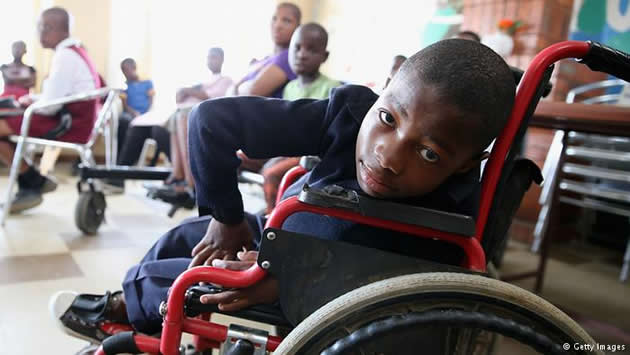
Disability has been a social phenomenon excluding people from mainstream society for ages, like caste, class, race, and religion (Shakespeare, 2006). Moreover, a person with a disability has been viewed as a burden on the family or the deed of past sin. About 71 percent of the disabled populace lives in rural India, where there are many myths and misconceptions about disability (Census of India, 2011). Such misconceptions and limited misunderstandings are a leading cause of stigma related to it. Nearly 55 percent of all disabled persons are literate (Census of India, 2011). Around 67 percent of all disabled persons in urban areas are literate, compared to 49 percent in rural areas (Ministry of Statistics and Programme Implementation, 2016). However, the situation is not welcoming in the urban context as well. Studies highlight that most of the urban disabled population lives in disabling environments like- informal setups, footpaths, slums, and under flyovers and has been seen as the most marginalized section of society, which is weak and unable to do something (Holst, 2018; Johansen & Jensen, 2017; McFarlane, 2021; Sarkar, 2014; Subbaraman et al., 2014).
In India, generally our first encounter with a person with a disability in the urban setup, particularly in the Indian context, has been when we see a person with a disability begging on the streets, in nearby religious institutions, and in most public places. This image has been with us since childhood, which leads to a sympathetic approach toward people with disability. In the urban context, the migrated population from rural areas with limited awareness carries the same thought process and negative attitude toward people with disabilities (Kermode et al., 2009; Roy et al., 2015). Although people have migrated, exposed to urban culture and mindsets, and changed their lifestyle, their thought process is still deeply rooted and reflected in their daily interactions and practices. The internalized misunderstanding about disability is a significant reason for excluding people with disabilities in the urban setup (Gurusamy et al., 2019; Nario-Redmond, 2019). Other factors that lead to creating further barriers for people with disabilities in urban areas include: –
- People with disabilities are not seen as productive members of mainstream society (Owens, 2015).
- They do not have support from their family systems, sibling systems, peers, and friends (Moffitt, 2015).
- They are not allowed to participate and interact in social activities because of their disability and religious beliefs (Rohwerder, 2018).
- They are not welcomed in the public sphere and have been forced to stay home, leading to isolation and neglect from family members (Bhan et al., 2017; Rana & Daniel, 2023).
- The family thinks of them as a burden on them and even curses a person with a disability’s presence in their life (Zechella & Raval, 2016).
Furthermore, the exclusion of people with disability in society is closely related to the misunderstanding of disability, focusing on people with disabilities’ functional limitations and society’s limited acceptance of individuality. People living in urban informal communities are not aware and sensitized to offer support and care for disability, and this is a significant reason people with disabilities are left alone at home. Studies demonstrated that such isolation has a psychological impact on people with disabilities, and they develop a sense of isolation and separation
from their immediate support system (Huremovic, 2019; Pettinicchio et al., 2021; Singh et al., 2020). People with disabilities internalize these
thoughts and start blaming themselves for the unjust done to them and accepting it as their fate (Rokach, 2019).
People with disabilities are further denied participation in marriage, education, rehabilitation, livelihood, and employment (Janardhana et al., 2015). Often, the negative attitude, inaccessible infrastructure, lack of support system in place, and limited knowledge and understanding about the disability altogether create a disabling environment for people with disabilities (Singal, 2015). These are some of the pieces of evidence from the case of visible disability, like a person with visual impairment, hearing impairment, orthopedic impairment, or locomotor impairment. But in the case of invisible disability, like intellectual disability, learning disability, or mental health conditions, the situation is even worse; they are treated inhumanely (Rohwerder, 2018). The community refers to them with derogatory terms, such as abnormal or mental, due to limited or no awareness of such disability, and they suffer significantly.
Call for Action:
Henceforth, there is a dire need to spread awareness about the disability and sensitize peers, friends, school children, parents, and other society people about the disability. Also, there is a need to promote disability-related programs in these informal setups, which creates opportunities for people with disabilities to interact, participate, and enroll in the school and access information related to schemes and rehabilitation. Creating a support group of students at the school level will also be an excellent initiative to include children with disabilities. Additionally, a parent collective of parents of children with disabilities can be very handy in such situations as this will create an open discussion forum about the parenting issues related to disability and ways of coping with it. Also, this will create a support system for parents, and they can create awareness in society about disability. Only when a person with a disability is made to participate in employment, education, and social and leisure activity at home and in the community will they be able to carve a niche for themselves in society. Hopefully, these efforts will promote their inclusion in mainstream society and culture in the long run.
References:
Bhan, N., Madhira, P., Muralidharan, A., Kulkarni, B., Murthy, G. V. S., Basu, S., & Kinra, S. (2017). Health needs, access to healthcare, and perceptions of ageing in an urbanizing community in India: a qualitative study. BMC geriatrics, 17, 1-11. https://doi.org/10.1186/s12877-017-0544-y
Gurusamy, J., Gandhi, S., Amudhan, S., Veerabhadraiah, K. B., Narayanasamy, P., Sreenivasan, S. T., & Palaniappan, M. (2019). Misconceptions about traumatic brain injury among nursing students in India: implications for nursing care and curriculum. BMC nursing, 18, 1-10. https://doi.org/10.1186/s12912-019-0388-1
Holst, T. (2018). The affective negotiation of slum tourism: City walks in Delhi. Routledge.
Janardhana, N., Muralidhar, D., Naidu, D. M., & Raghevendra, G. (2015). Discrimination against differently abled children among rural communities in India: Need for action. Journal of Natural Science, Biology, and Medicine, 6(1), 7. https://doi.org/10.4103%2F0976-9668.149070
Johansen, M. L. E., & Jensen, S. B. (2017). “They want us out”: Urban regeneration and the limits of integration in the Danish welfare state. Critique of Anthropology, 37(3), 297-316. https://doi.org/10.1177/0308275X17719990
Kermode, M., Bowen, K., Arole, S., Pathare, S., & Jorm,
A. F. (2009). Attitudes to people with mental disorders: a mental health literacy survey in a rural area of Maharashtra, India. Social psychiatry and psychiatric epidemiology, 44, 1087-1096.McFarlane, C. (2021). Fragments of the City: Making and remaking urban worlds. Univ of California Press. https://doi.org/10.1007/s00127-009-0031-7
McFarlane, C. (2021). Fragments of the City: Making and remaking urban worlds. Univ of California Press.
Ministry of Statistics and Programme Implementation. (2016). Disabled Persons in India A statistical profile 2016. Social Statistics Division. Ministry of Statistics and Programme Implementation, Government of India. https://www.mospi.gov.in
Moffitt, R. A. (2015). The deserving poor, the family, and the US welfare system. Demography, 52(3), 729-749. https://doi.org/10.1007/s13524-015-0395-0
Nario-Redmond, M. R. (2019). Ableism: The causes and consequences of disability prejudice. John Wiley & Sons.
Huremovic, D. (2019). Mental health of quarantine and isolation. Psychiatry of pandemics: A mental health response to infection
outbreak, 95-118. https://www.sonepsyn.cl/web/covid19/11.pdf#page=102
Owens, J. (2015). Exploring the critiques of the social model of disability: the transformative possibility of Arendt’s notion of power. Sociology of health & illness, 37(3), 385-403. https://doi.org/10.1111/1467-9566.12199
Pettinicchio, D., Maroto, M., Chai, L., & Lukk, M. (2021). Findings from an online survey on the mental health effects of COVID-19
on Canadians with disabilities and chronic health conditions. Disability and Health Journal, 14(3), 101085. https://doi.org/10.1016/j.dhjo.2021.101085
Rana, A., & Daniel, R. (2023). Insights into the Education System in India and the Current Impact of COVID-19 on Child Rights. In Inclusion, Equity, Diversity, and Social Justice in Education: A Critical Exploration of the Sustainable Development Goals (pp. 77-90). Singapore: Springer Nature Singapore.
Rohwerder, B. (2018). Disability stigma in developing countries. https://opendocs.ids.ac.uk/opendocs/bitstream/handle/20.500.12413/13795/Disability_stigma_in_developing_countries.pdf?sequence=1
Rokach, A. (2019). The psychological journey to and from loneliness: development, causes, and effects of social and emotional isolation. Academic Press.
Roy, A. K., Singh, P., & Roy, U. N. (2015). Impact of rural-urban labour migration on education of children: A case study of left
behind and accompanied migrant children in India. Space and Culture, India, 2(4), 17-34. https://doi.org/10.20896/saci.v2i4.74
Sarkar, S. (2014). Urban Development-Challenges and Progress.
Shakespeare, T. (2006). The social model of disability. The disability studies reader, 2, 197-204. https://ieas-szeged.hu/downtherabbithole/wp-content/uploads/2018/02/Lennard-J.-Davis-ed.-The-Disability-Studies-Reader-Routledge-2014.pdf#page=221
Singal, N. (2015). Education of children with disabilities in India and Pakistan: An analysis of developments since 2000. Retrieved on January, 13, 2017.
Singh, S., Roy, D., Sinha, K., Parveen, S., Sharma, G., & Joshi, G. (2020). Impact of COVID-19 and lockdown on mental health of children
and adolescents: A narrative review with recommendations. Psychiatry research, 293, 113429. https://doi.org/10.1016/j.psychres.2020.113429
Subbaraman, R., Nolan, L., Shitole, T., Sawant, K., Shitole, S., Sood, K., … & Patil-Deshmukh, A. (2014). The psychological toll of
slum living in Mumbai, India: a mixed methods study. Social science & medicine, 119, 155-169. https://doi.org/10.1016/j.socscimed.2014.08.021
Zechella, A. N., & Raval, V. V. (2016). Parenting children with intellectual and developmental disabilities in Asian Indian families in the United States. Journal of Child and Family Studies, 25, 1295-1309. https://doi.org/10.1007/s10826-015-0285-5
